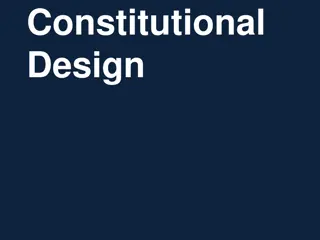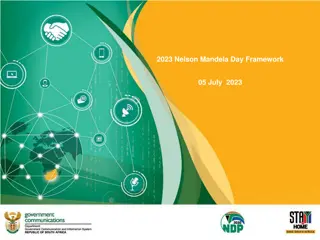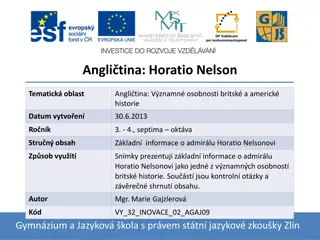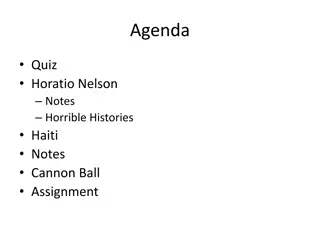
Ethical Use of AI in E-Discovery: Emerging Trends and Tools
Explore the ethical use of emerging tools in E-discovery, focusing on AI, competence, communication, and confidentiality. Understand the professional responsibilities regarding technological competence and safeguarding client information in the legal tech landscape.
Download Presentation

Please find below an Image/Link to download the presentation.
The content on the website is provided AS IS for your information and personal use only. It may not be sold, licensed, or shared on other websites without obtaining consent from the author. If you encounter any issues during the download, it is possible that the publisher has removed the file from their server.
You are allowed to download the files provided on this website for personal or commercial use, subject to the condition that they are used lawfully. All files are the property of their respective owners.
The content on the website is provided AS IS for your information and personal use only. It may not be sold, licensed, or shared on other websites without obtaining consent from the author.
E N D
Presentation Transcript
Looking Ahead E-Discovery Trends and the Ethical use of Emerging Tools September 16, 2022 Anne Marie Hanson, Blue Cross and Blue Shield of SC Jarrett Coco, Nelson Mullins
Agenda Ethical Rules New Data Sources Emerging Tech 2
Ethical Use of AI and Emerging 1. Competence 2. Communication 3. Confidentiality 4. Supervision Tools 3
Rule 1.1 Attorney Competence SC Rule of Professional Conduct 1.1: A lawyer shall provide competent representation to a client. Competent representation requires the legal knowledge, skill, thoroughness and preparation reasonably necessary for the representation. Comment [8]: To maintain the requisite knowledge and skill, a lawyer should keep abreast of changes in the law and its practice, including the benefits and risks associated with relevant technology, engage in continuing study and education and comply with all continuing legal education requirements to which the lawyer is subject. (emphasis added). As to the Technology Revisions to Model Rule 1.1, the ABA has stated: Competence in using a technology can be a requirement of practicing law. Requirements for technological competence may appear as part of rules for professional conduct, continuing legal education (CLE) programs, and malpractice insurance premium credits. 4
SC Rule of Professional Conduct 1.4: (a) A lawyer shall: (2) reasonably consult with the client about the means by which the client's objectives are to be accomplished Rule 1.4 Communication According to Rule 1.4, the ultimate decision on whether to use artificial intelligence for legal services to accomplish clients goals should be communicated to the client Best practices: Memorialize communications with client in writing Articulate reasoning behind decision to use or not use AI Articulate how decision will further clients objectives 5
Rule 1.6 Duty of Confidentiality (c) A lawyer shall make reasonable efforts to prevent the inadvertent or unauthorized disclosure of, or unauthorized access to, information relating to the representation of a client. Comment to Model Rule 1.6 amended to include factors to be considered in determining whether lawyer made reasonable efforts and to state that, [a] client may require the lawyer to implement special security measures not required by this Rule or may give informed consent to forego security measures ***, and to note that state or federal laws may require lawyer to take additional steps, but that this is beyond the scope of these Rules. Every aspect of the use of AI may intersect with the lawyer s duty of confidentiality: Vendor sophistication and data protection Ownership of information Protection of confidential information in dealings with vendors Security measures Termination of relationship 6
Rule 5.1 Responsibilities of a Partner or Supervisory Lawyer (a) A partner in a law firm, and a lawyer who individually or together with other lawyers possesses comparable managerial authority in a law firm, shall make reasonable efforts to ensure that the firm has in effect measures giving reasonable assurance that all lawyers in the firm conform to the Rules of Professional Conduct. 7
Rule 5.3 Responsibilities Regarding Nonlawyer Assistants With respect to a nonlawyer employed or retained by or associated with a lawyer: (a) a partner, and a lawyer who individually or together with other lawyers possesses comparable managerial authority in a law firm shall make reasonable efforts to ensure that the firm has in effect measures giving reasonable assurance that the person's conduct is compatible with the professional obligations of the lawyer; (b) a lawyer having direct supervisory authority over the nonlawyer shall make reasonable efforts to ensure that the person's conduct is compatible with the professional obligations of the lawyer; and (c) a lawyer shall be responsible for conduct of such a person that would be a violation of the Rules of Professional Conduct if engaged in by a lawyer if: (1) the lawyer orders or, with the knowledge of the specific conduct, ratifies the conduct involved; or (2) the lawyer is a partner or has comparable managerial authority in the law firm in which the person is employed, or has direct supervisory authority over the person, and knows of the conduct at a time when its consequences can be avoided or mitigated but fails to take reasonable remedial action. 8
Discovery Process Overview Processing Preservation Information Management Identification Review Production Presentation Collection Analysis https://edrm.net/edrm-model/ 9
Traditional Data Sources Email Computers Cloud storage Other shared locations Network Structured data Hard Copy Scanning 10
New Data Sources Microsoft 365, Teams, Slack Zoom, GoTo, Webex, BlueJeans, etc. Mobile Devices Social Media Internet of Things (IoT) 11
New Sources Increasingly At Requests for Production in Litigation Courts Granting Discovery Regulators Seeking Discovery Analysis re Discoverability Issue 12
New Sources, New Challenges Collection Security/Encryption Privacy Possession/Custody/Control Analysis/review Chasing Technology Production 13
New Legal Tech Examples Processing Tools Contextual Tools Active AI Tools Emerging AI Tools 16
Artificial Intelligence Artificial Intelligence ( AI ) is the is the simulation of human intelligence processes by machines, especially a computer system. We consider this to include any automated process that classifies, categorizes, summarizes, makes decisions, or provides guidance regarding data and information using statistical, rule- based, or other algorithmic means. 17
How AI is being used in Legal Applications Document Review Legal Research Assessing Risk/Predicting Legal Outcomes Identifying and Protecting Data such as PHI and PII 18
NexLP StoryEngine/Brainspace Entity Extraction MIYLYI Blackout Automated redactions Native redactions Canopy Initial impact report Entity normalization De-duplicated master list of PHI Relativity/TextIQ Relativity Redact TextIQ PII Identification TCDI Auto Redact for certain PII (DOB, SSN, etc) Recent Technology Advances 19
Identification Addressing PHI and PII in Legal Matters De-Identification Normalization 20
PHI and PII Identification Often false positives with simple text searches Searches for certain sequences or patterns of data (e.g., XXX-XX-XXXX) can improve results 21
PHI and PII Identification AI Modeling & Contextual Algorithms Identify additional instances of PHI and PII by analyzing the context in which words are being used within data Train AI learning models on different instances of PHI and PII 22
PHI and PII Identification Entity Extraction identify people, companies, places, etc. Screenshot from Story Engine 23
PHI/PII De-Identification Anonymization versus Pseudonymization Mass Redaction/Labeling PI Level e.g, all SSN or Credit Card #s Document Level e.g., form duplicates 24
PHI and PII Normalization Creation of a Master List Identify and merge name variations Anomaly detection Deduplicate entries 25
Final Thoughts Competence is a key principle for the reliable use of AI in legal matters. Technology can greatly assist with an attorney s duty of confidentiality, but must also be analyzed carefully and used thoughtfully to ensure privacy and security standards are met. Lawyers are obligated to supervise the work of the AI know your AI and your team. 26
Questions? Contact Information Anne Marie Hanson Regulatory & Compliance Counselor Blue Cross and Blue Shield of South Carolina anne.marie.hanson@bcbssc.com (803) 264-3270 Jarrett Coco Partner Nelson Mullins Riley & Scarborough jarrett.coco@nelsonmullins.com 803.255.5536 27





















